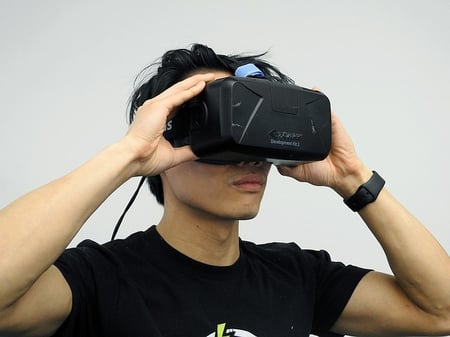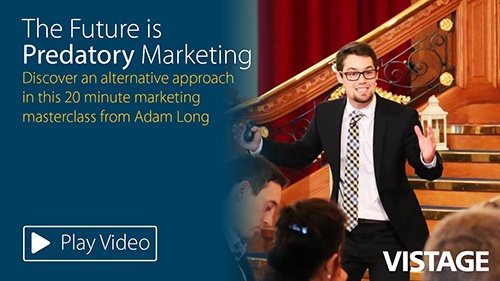
Facebook surprised the world in July 2014 by paying $2 billion for Oculus, a start-up that has taken virtual reality from a futuristic dream to a practical technology. The move was a shrewd one; Facebook is betting that it will change the way we consume media. Virtual reality technology has improved exponentially in the last 18 months and is finally living up to its promise of genuinely immersive experiences. In fact, it's already changing the way marketing is done.
Virtual reality is simple. First, grab a headset – they look like a ski visor welded to a Stormtrooper mask. Press a button and you’ll find yourself in hyper-realistic 3D environments, from futurist malls to ancient plains populated with dinosaurs to enormous movie theatres. The experience truly is like being there – you will forget you’re still in the office.
Now that’s all well and good for games, but what does this mean for marketers? Here are the four ways that virtual reality is already transforming marketing.
Experience before you buy
Have you ever booked a hotel online, impressed by the beautiful views of the New York city skyline, only to find on arrival that it’s a shoebox with barely enough room for both your suitcase and your spouse? Well, with virtual reality you can actually experience the room as if you were there – it’s size, it’s atmosphere, it’s view – before you book. Last year the Shangri La chain of hotels released their first experiments with virtual reality previews - and more are slated to come.
Sotheby’s International Realty is also using virtual reality to sell luxury homes. The rich and the famous don’t have the luxury of time to inspect each home – making them a prime target for virtual reality. Meanwhile, architects and developers are already showing potential buyers what their future dwelling will look like.
The store that was built for you
Last year Deloitte created the first demonstration of a virtual reality store. Impressively, the experience is matched with data analytics that track what products you look at and what you linger on. As you browse, the store generate new shelves and racks stocked with products and colours that you're most likely to buy. It's the logical jump from Amazon's recommendation engine ("People who like that, love this") to a store that feels like it was built just for you.
Face-to-face sales without the brochure
Business development managers ask us how to create collateral to stand out in face-to-face client meetings. The bad news is that the brochure is dead. Most are discarded after meetings without ever being read.
The good news is that virtual reality can create an experience clients will never forget. If you’re selling mining equipment, commercial printers or anything too big to bring with you, bring a virtual experience to your customers. Take the headset with you, ditch the scale models and give your client an experience of your equipment.
The ultimate explainer video for your business
Video explainers are one of the most effective online tools of the last few years. As people have switched from reading long blocks of text to skimming and scanning web pages – a one to two minute video explaining your value drives up conversion and improves Google rankings.
Virtual reality gives you the chance to offer an immersive explainer. Don’t just tell people what you stand for, let people experience it.
Already several of our clients, from financial services to healthcare, have used virtual reality in their trade shows - by simply showing their 2D video content in a 3D simulated environment. The novelty of the experience makes it memorable, long after the trade show bag has been discarded.
And over in the US, rollercoaster chain Six Flags are creating virtual reality roller coasters. Will it attract customers? You can count on it.
Is it too soon?
It’s a fair question to ask – if so few people have headsets, why should I invest in virtual reality now? Shouldn’t I wait? Well here’s an easy answer – there are two very clear situations in which it makes sense to use virtual reality in your marketing.
- To prove that you are innovative.You can’t claim to be funny, you have to make people laugh. Yet when it comes to innovation as a value proposition, most companies claim ‘'innovation' without demonstrating it. So if you are positioning your business as innovative – it’s time to use VR. Don’t “tell” people that you’re innovative - demonstrate it by being bold and first in your industry. Being first also generates PR, creating value that more than justifies the investment.
- To take an experience to your customers.If you sell face to face then it doesn’t matter whether your customers have a headset or not – you can take the experience to them.
The bottom line is that it’s better to be early than too late. Virtual reality is here and it’s time to start asking if it can transform your marketing – before competitors get there first.
More from Vistage:

